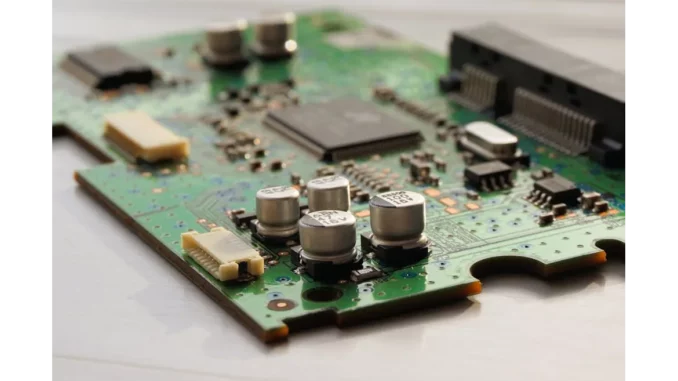
Summary
Spintronics, a burgeoning field in modern electronics, is poised to transform data transfer, electric vehicles, and quantum computing. Dr. Evelyn Carter, a prominent researcher, highlights the technology’s potential to surpass traditional electronics by leveraging electron spin, promising advancements across multiple industries.
Main Article
Understanding Spintronics
In a recent discussion at a café in Cambridge, Dr. Evelyn Carter, a leading authority in the field, introduced spintronics not as a concept from science fiction but as a technology transforming modern electronics. “Spintronics, or spin transport electronics,” Dr. Carter explained, “exploits the intrinsic spin of electrons, in addition to their electronic charge, in solid-state devices.” This dual utilisation offers possibilities for creating faster, more efficient, and compact electronics, a necessity as the demand for smaller and more powerful devices intensifies.
Traditional electronics have been confined to relying on the charge of electrons for transmitting information. In contrast, spintronics introduces an additional layer by harnessing electron spin, potentially revolutionising electronics’ capabilities. “Spintronic devices have the potential to surpass the limitations of conventional electronics,” Dr. Carter noted, pointing out the relentless drive for miniaturisation and enhanced performance.
Applications in Data and Automotive Industries
A significant area of impact for spintronics lies in data storage and transfer. As industries such as cloud computing and artificial intelligence increasingly depend on vast data volumes, the speed and capacity enhancements offered by spintronic devices become invaluable. Dr. Carter elaborated, “The ability to store and process data more efficiently is one of the driving forces behind the spintronic revolution.”
The automotive industry, particularly the electric vehicle (EV) sector, stands to gain significantly from spintronics. “Electric vehicles are essentially computers on wheels,” Dr. Carter remarked with a chuckle. The integration of spintronic devices could lead to advancements in battery management systems, sensor technologies, and electric motors, fundamentally altering the EV market’s trajectory.
Potential in Quantum Computing
Spintronics also holds promise for quantum computing, a field dependent on the unique properties of quantum bits, or qubits. Dr. Carter shared insights into how spintronic devices could create more stable qubits, addressing some of the current challenges in quantum computing. “Quantum computing is still in its infancy, but spintronics could provide the stability needed,” she noted, highlighting the technology’s potential to drive breakthroughs in this nascent industry.
Despite these promising applications, the integration of spintronics into mainstream technology faces challenges. As Dr. Carter acknowledged, “Research and development are crucial. We’re making strides, but it’s a collaborative effort that requires time, investment, and innovation.”
Detailed Analysis
Spintronics emerges at a time when the demand for technological advancement is at an all-time high. The digital transformation across industries has made the need for faster and more efficient computing and data handling solutions imperative. The global cloud computing market, for example, is expected to grow significantly, driven by the increasing volume of data generated by users and businesses. Spintronics offers a pathway to manage this data explosion through its enhanced data storage and processing capabilities.
In the automotive sector, the shift towards electric vehicles is accelerating as governments and consumers push for more sustainable transportation options. Spintronics could play a crucial role in improving EV efficiency and performance, addressing one of the critical barriers to widespread EV adoption—battery life and performance.
The potential impact on quantum computing, though still in the early stages, is equally significant. As industries seek to harness quantum computing’s transformative potential, spintronics could offer the stability required for practical applications, facilitating the transition from theoretical to applied quantum computing.
Further Development
As research into spintronics progresses, further advancements are anticipated in both theoretical understanding and practical applications. The technology’s developmental nature means continued collaboration between academia, industry, and government will be essential. Investments in research and development are expected to rise, driven by the promising potential of spintronics to reshape multiple industries.
Readers are encouraged to follow upcoming reports detailing breakthroughs in spintronic applications, particularly within data management and electric vehicles. As Dr. Carter and her peers continue to push the boundaries, the unfolding narrative of spintronics will offer insights into the future of technology and innovation.

